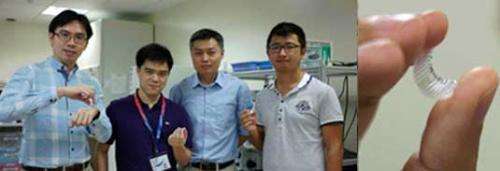Breakthrough drug-eluting patch stops scar growth and reduces scar tissues

Scars—in particular keloid scars that result from overgrowth of skin tissue after injuries or surgeries—are unsightly and can even lead to disfigurement and psychological problems of affected patients. Individuals with darker pigmentation—in particular people with African, Hispanic or South-Asian genetic background—are more likely to develop this skin tissue disorder. Current therapy options, including surgery and injections of corticosteroids into scar tissues, are often ineffective, require clinical supervision and can be costly.
A new invention by researchers from Nanyang Technological University in Singapore (reported in the current issue of Technology) provides a simple, affordable and—most importantly—highly effective way for patients to self-treat keloid scars. The team of scientists and engineers from NTU's School of Chemical and Biomedical Engineering, in collaboration with clinicians from Singapore's National Skin Centre, have developed a special patch made from polymers fabricated into microneedles, which are loaded with the US food and drug administration (FDA)-approved scar-reducing drug, 5-fluorouracil. Self-administered by patients, the microneedles attach the patch to scar tissue and allow sustained drug-release (one patch per night). The drug as well as the physical contact of the microneedles with the scar tissue contributes to the efficacy of the device, leading to the cessation of scar tissue growth and a considerable reduction of keloids as demonstrated in laboratory cultures and experiments with animals.
"Most patients seek treatment due to disfigurement and/or pain or itch of scars," says Assistant Professor Xu Chenjie from NTU who leads the study. "We wanted to develop a simple, convenient, and cost-effective device able to inhibit keloid growth in skin tissue and reduce the size of disfiguring scars," adds Yuejun Kang, another key investigator in the study from NTU.
"Self-administered treatment for keloid scars can reduce the economic burden on the healthcare system and provide a treatment option for patients who have limited access to medical care," comments Professor Jeffrey Karp from Brigham and Women's Hospital at Harvard Medical School, US, an expert on medical device design who was not involved in this study.















